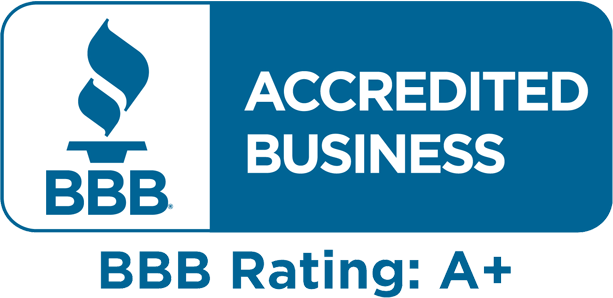8 Tips for Creating a Home Inventory Checklist
Insurance claims go smoother when you have a home inventory checklist.
Unfortunately, most homeowners don’t make a home inventory checklist until after a major insurance claim.

Fortunately, ClaimsMate can help. You can hire a ClaimsMate public adjuster to help manage your insurance claim, organizing your home inventory checklist to ensure it accurately reflects the value of your possessions – and increases your payout.
Here are 8 other tips for creating the best home inventory checklist to maximize your insurance claim.
Include All Relevant Information on the Checklist
Your home inventory checklist needs to include more than just the name of the item and its approximate value.
Your checklist should include information like:
- The value of the item
- The date you purchased the item
- Any receipts or invoices for the item
- The serial number, model number, or any other identifying information unique to that item
- Photos or videos of that item (especially if it’s a high value item)
- Any other relevant information
The more information you have supporting an item’s value, the smoother your insurance claim should go.
Use a Home Inventory App
Most homeowners simply use a spreadsheet to track their possessions. However, there are home inventory apps that do the hard work for you.
Some of the best home inventory apps include:
- NAIC Home Inventory (available for iOS or Android)
- Encircle (available for iOS or Android)
- Itemtopia (available for iOS or Android)
All three apps make it easy to organize items in your home, add relevant data, and adjust that data over time. Plus, they store all data in the cloud, allowing you to reference your inventory even if all your home’s electronics are destroyed in a disaster.
Use a Premade Home Inventory Spreadsheet Template
If you don’t want to install a home inventory app, then that’s okay – there are plenty of home inventory spreadsheet templates available.
Two of the best templates available today include:
- United Policyholders home inventory spreadsheet template
- New York Department of Financial Services home contents inventory checklist
Both spreadsheets can be printed off and used immediately. Or, you can keep them in digital format. The spreadsheets organize items by room or type, making it easy to provide proof to your insurer after a loss.
Use Visual Evidence to Prove the Condition of an Item
Insurers consider the condition of your items when calculating the value of a claim.
Condition is important for more than just collectibles. It also affects the value of furniture and everything else in your home.
If you don’t have photos or videos proving the condition of an item, insurers use their own depreciation calculations to estimate the value of that item – and those calculations may not work in your favor.
Whether you’re dealing with collectibles or general items around your home, take photos and videos – particularly for high-value items. Note the features and conditions of the items, and take photos or videos from multiple angles as proof.
Add New Purchases to Your Home Inventory As You Buy Them
It takes a lot of work to create your first home inventory. You need to go room to room, noting each item in your home as you go.
To avoid hard work in the future, add new purchases to your home inventory as you buy them.
Get into the habit of opening your home inventory each time you bring a new purchase into your home. It will save you hours of work in the future.
Keep Receipts, Especially for Certain Items, to Avoid Insurance Headaches
Ideally, your home inventory has receipts proving the value of every single item in your home – from your TVs to your forks and knives.
Realistically, however, your home insurer doesn’t generally need receipts for everything on your list. However, they do need receipts for certain categories of items.
Consider keeping receipts form the following items to ensure a smooth insurance claim:
- Valuable electronics, including computers, TVs, gaming systems, smartphones, tablets, and other items that cost hundreds of dollars or more.
- Appliances, including dishwashers, washers, dryers, refrigerators, ovens, grills, and other small and large appliances.
- Furniture, including all large and small pieces throughout your home.
- Jewelry, especially if you have endorsements for high-value items.
- Sports equipment, hobby equipment, tools, and similar items. These items may not seem overly expensive on their own, but they add up to thousands of dollars in value when counted together.
- Significant home improvements and renovations, including any changes you or contractors made to your home over time that increased its value. If you got new floors, for example, and your house burns down, then your insurer needs proof you actually installed those new floors.
- Any item valued over $500 purchased in the last 5 years. With cloud storage, online credit card statements and valued client rewards, the insurers feel that any new items purchased should be able to be documented in one of these forms for newer high dollar items.
Don’t have a receipt? Check your email or contact the store where you purchased the item. You may be able to recover a receipt or invoice.
Be Prepared to Provide Proof of Ownership
Let’s say you recently purchased a $2,000 TV. A house fire destroys your TV, and you throw it away. You inform your insurer of the loss, and they demand proof of ownership.
Do you have proof you own every item in your home? Is there any evidence you actually owned the item before your house fire or other disaster? Oftentimes, the debris from a fire leaves very little to “inspect” or prove that these items were actually in your possession.
Insurance companies lose billions each year to fraud. Some policyholders simply exaggerate the value of insurance claims, adding thousands of dollars’ worth of items they don’t own in the hopes of a payday.
Be prepared to provide proof of ownership for any items listed on your home inventory – like photos or videos of that item or receipts.
Hire a Public Adjuster to Maximize Your Compensation
A public adjuster performs many important jobs related to your insurance claim.
One of those jobs is to organize a home inventory to maximize compensation.
A good public adjuster can:
- Organize your home inventory in a way that makes it easy to get your claim settlement approved.
- Help you get proof of ownership for high-value items to ensure you get paid.
- List items in a way that maximizes the value of your insurance claim and increases your ultimate payout.
A good public adjuster could double or even triple your payout compared to the original offer presented by your insurance company. By organizing a coherent home inventory, a public adjuster can help provide a smoother claim process while also assisting with every aspect of the claim to help secure the settlement you deserve.
Schedule a free consultation with a ClaimsMate public adjuster today to maximize your settlement.






